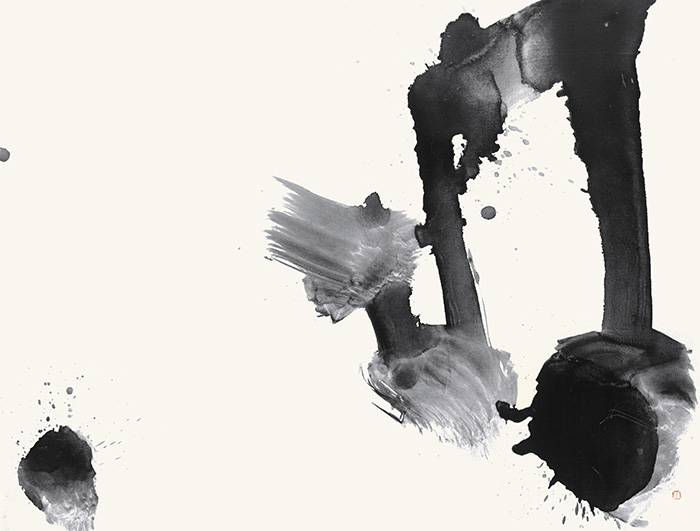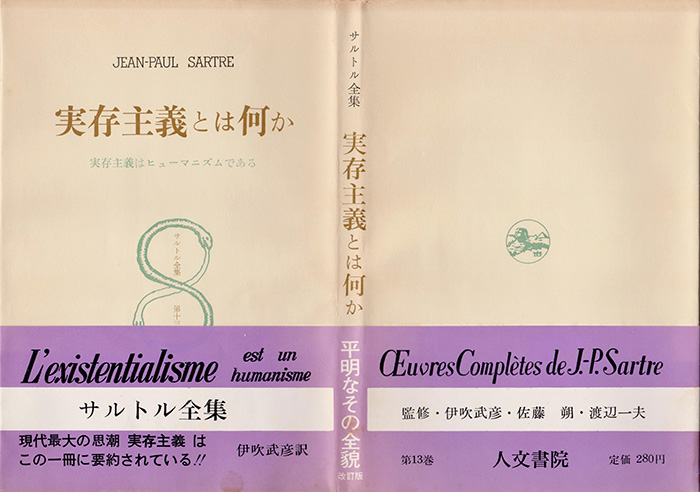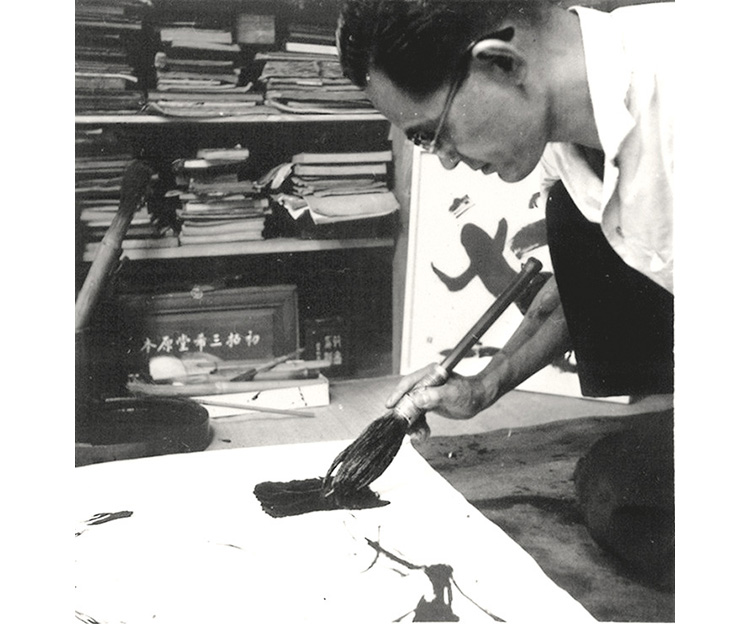However, it was the appearance of Jean-Paul Sartre (1905-1980) that became a force for the ideas of "existence" to spread all over the world and appeal strongly to young people. Sartre studied E. Husserl’s phenomenology and Heidegger’s philosophy and published his philosophical novel “La Nausée (Nausea)" in 1938. During World War II, he was once a prisoner of war and wrote his main book, “L'Être et le néant (Being and Nothingness). After the war, in 1945, he gave a lecture titled "Existentialism is Humanism" (Japanese translation, “What is Existentialism?”, published in 1955). A large audience thronged toward the lecture, and the next day the newspaper reported it as a ‘cultural event’ in a big headline. In Europe in the immediate aftermath of World War II, the existing values collapsed, and many of people lost their greatest support of the heart, exposing anxiety, confusion, and human helplessness. Sartre discussed how to overcome uneasiness and nothingness in such a situation.

Nankoku: Work 58ー44 Major 1958 (Exhibits for 5th Biennial of São Paulo 1959)
Sartre's declaration in "Existentialism is Humanism" is first, ‘Existence precedes Essence’. In the case of an object, the property, material, and use of the object are intrinsically or potentially prescribed. That is to say, in the case of the object the essence is a potential existence (the substance / eidos ≪form≫) of the object. In the case of man, if it is potentially or with possibility defined what man is and what the purpose of human existence is, it becomes the essence of man. For example, if man is created by God and the events of human life are predestinated, the essence exists before human existence. However, Sartre declares that ‘existence precedes essence’ in the case of man. "God is dead," as F. W. Nietzsche pronounced. And man experienced the reality of the death of God in World War II.
What do we mean by saying that existence precedes essence? We mean that man first of all exists, encounters himself, surges up in the world – and defines himself afterwards. If man as the existentialist sees him is not definable, it is because to begin with he is nothing. He will not be anything until later, and then he will be what he makes of himself. Thus, there is no human nature, because there is no God to have a conception of it.
(Existentialism is Humanism)
Man first exists in reality, shows the appearance unexpectedly in the world, and tries to make up his essence by himself afterwards. ‘Man is nothing but the one who creates him by himself’. Man first exists in reality (in existence) and becomes the human being. Therefore, from this point of view the concept of ‘independence’ becomes important as living independently by himself. To make himself is to throw himself out toward the future, that is, to ‘project’ his way of life freely, and to give the value to the self and the world. It is unknown if this project will succeed. Life is a bet. I am destined to be forever beyond me. I am destined to be free.
That man is free is that man exists. To exist means that man lacks being, and therefore man is the rift of being and the nothingness of being. Moreover, man is put in a constant situation, and his appearance is shown in the situation, and man's freedom encounters resistance, trouble, and difficulty in the situation. Therefore, man's free choice of self in the situation becomes to restrict his self at the same time (engagement, society participation, commitment). Sartre's thought was to be accepted by people as a way to shed new light on existence, to face the fundamental anxieties of the people of that time, to pursue the meaning of living freely, and to regain human dignity.

The background that Nankoku represented with the defeat, "Ink Form is the social existence" was the declaration to cut off feudal Confucian corrupt customs which had been attached to the calligraphy until then, to reach after the artistry of calligraphy independently freely, and to try to achieve a new value of calligraphy socially. Immediately after the defeat, the old traditional values collapsed in the chaotic situations filled with anxiety, and also Nankoku was at a loss and was spending days of a struggle in which the answer could not find, asking himself what the essence of calligraphy was and where his existence to write calligraphy was. To make a breakthrough in this situation, Nankoku returned to the origin of calligraphy. The decision to write calligraphy independently was to cut off the calligraphy with obstinate customs and to get back to the essential calligraphy.
To write calligraphy freely and independently is to freely choose oneself in the placed situation, and to restrict oneself at the same time. It is not simply to put the life and personality of the calligrapher himself unconsciously and mindlessly on the brush and not to run down on the paper. To write one point and one line on a blank sheet of paper where nothing is written is to build a bridge over the rift of one’s being, and to show the trace of existence by walking on a tightrope undependably over the abyss of being's nothingness. Therefore, it is too simple to say that to show the trace of existence is to engrave calligrapher's apolitical humanity (personality) in the blank paper as an obstinate political situation. Instead, it destroys the antiquated customs of old traditional calligraphy, cuts off even the characters, and makes itself seen in a blank sheet of paper by the essence itself of calligraphy that has been covered. The blank paper is man's being oblivion, and in this meaning, it is nothingness, therefore, to write one point and one line become an independent decision which tries to make his being (essence) (= the essence of calligraphy) exist in the nothingness.
This tightrope walk over the abyss of nothingness is filled with anxiety about the freedom to walk alone. Because of this fear of freedom, the easy way to follow the powerful people, to escape into the collectivity, and to avoid decisions will be growing in the way.
However, for Nankoku, this decision cannot help becoming an eternal repeated movement to make the essence of calligraphy as possible being actual. Repeatedly and repeatedly, Nankoku continues to draw the lines disciplined by ‘Rin-Sho (copy and study the classical calligraphy)’. It might be only "It tried to expose honestly my own appearance as it is at time ". However, it can be said that only it was existence of Nankoku.
